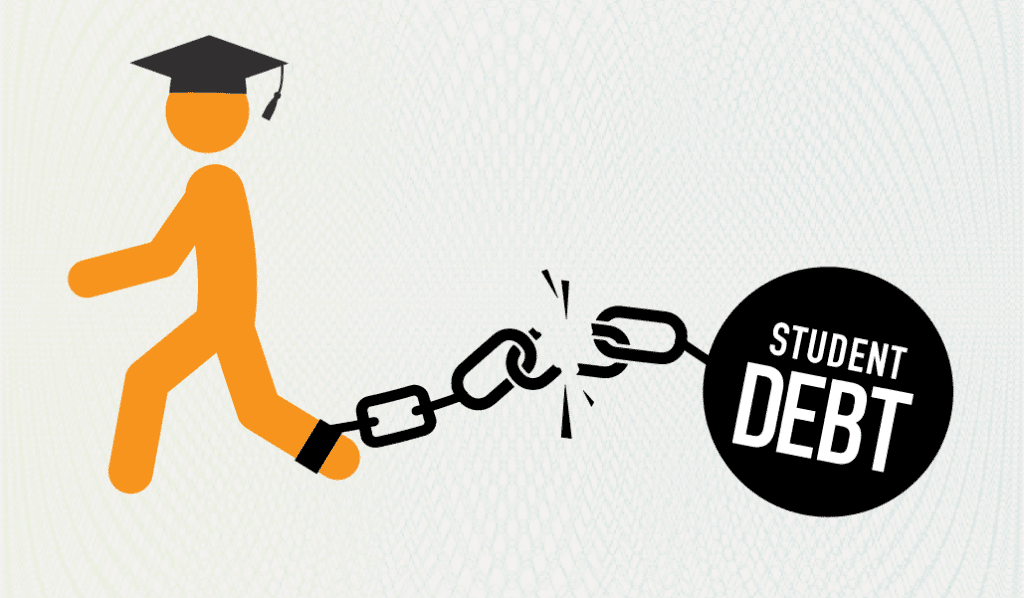
Yesterday, the Biden administration took a bold first step to tackling the $1.7 trillion student debt crisis in this country by providing limited student debt cancellation. Already, borrowers and advocates are asking important questions for clarity on process and eligibility. Here’s what we know so far:
- Individuals who earn less than $125,000/year or couples earning less than $250,000/year are eligible for federal student debt cancellation of $10,000.
- If you were a Pell Grant recipient in college and meet the income requirements, you are eligible for up to $20,000 in student debt cancellation.
- This determination is based on adjusted gross income.
- Only student debt held by the Department of Education is eligible for cancellation.
- Any student debt that is cancelled will not be taxable.
- Cancellation may be automatic for borrowers for whom the Department already has income information.
- For other borrowers, the Department of Education will post a cancelation application by December 31, 2022. You can sign up for updates for when the application is available on ED’s website.
- Cancellation only applies to existing loans. New loans are not eligible.
- The pause on student loan payments has been extended until December 31, 2022. The administration says this will be the final pause on repayment, and that remaining student loan payments will resume in January 2023.
This action will be transformational for more than 20 million Americans who owe up to $20,000 or less. However, as we detail in How Student Debt Harms Black Borrowers Mental Health, “One year after completing their bachelor’s degree, Black borrowers owe $39,043, on average, in principal and interest.” So, while we applaud the administration for taking action, more needs to be done. Ed Trust advocates for cancelling at least $50,000 of student debt and removing income caps altogether. Recent research found that “Black and Hispanic households would lose out disproportionately relative to White households with such an income cap.”
What’s more, to help current and future college students, the administration needs to address affordability more comprehensively by doubling the Pell Grant and making college debt free by creating a federal/state partnership. Congress should also take action and pass Senator Schatz’s Debt-Free College Act (S. 1263), which would ensure that future students to do not have to take on debilitating debt to attend college any more.
As the ED implements this action, important questions arise regarding function and eligibility:
- Which year of income will be used to determine eligibility?
- How and to which loans will cancellation be applied?
- Will cancellation be given before repayments start so borrowers’ principal balance is reduced?
- How will borrowers be notified to ensure all eligible borrowers receive cancellation?
- Will the application be offered in multiple languages? If so, which ones?
- How will individuals who are incarcerated yet eligible complete an application?
While we should celebrate the victory that many have long advocated, the work is far from done. We need to continue to push for debt-free college and additional reforms and cancellation to ensure that the student debt burden that can be detrimental to borrowers’ mental and financial health is addressed and that college students don’t end up in this predicament again.
-------------------------
By: Wil Del Pilar
Title: What You Need to Know About Student Debt Cancellation
Sourced From: edtrust.org/the-equity-line/what-you-need-to-know-about-student-debt-cancellation/
Published Date: Thu, 25 Aug 2022 19:54:50 +0000
Read More
Did you miss our previous article...
https://prohealthsciences.com/pandemic-news/the-dream-project-staff-shortages-and-the-canceling-of-the-ku-klux-klanwait-what
 General Health and WellnessFitness and ExerciseSupplements and VitaminsPandemic NewsVideosPrivacy PolicyTerms And Conditions
General Health and WellnessFitness and ExerciseSupplements and VitaminsPandemic NewsVideosPrivacy PolicyTerms And Conditions
